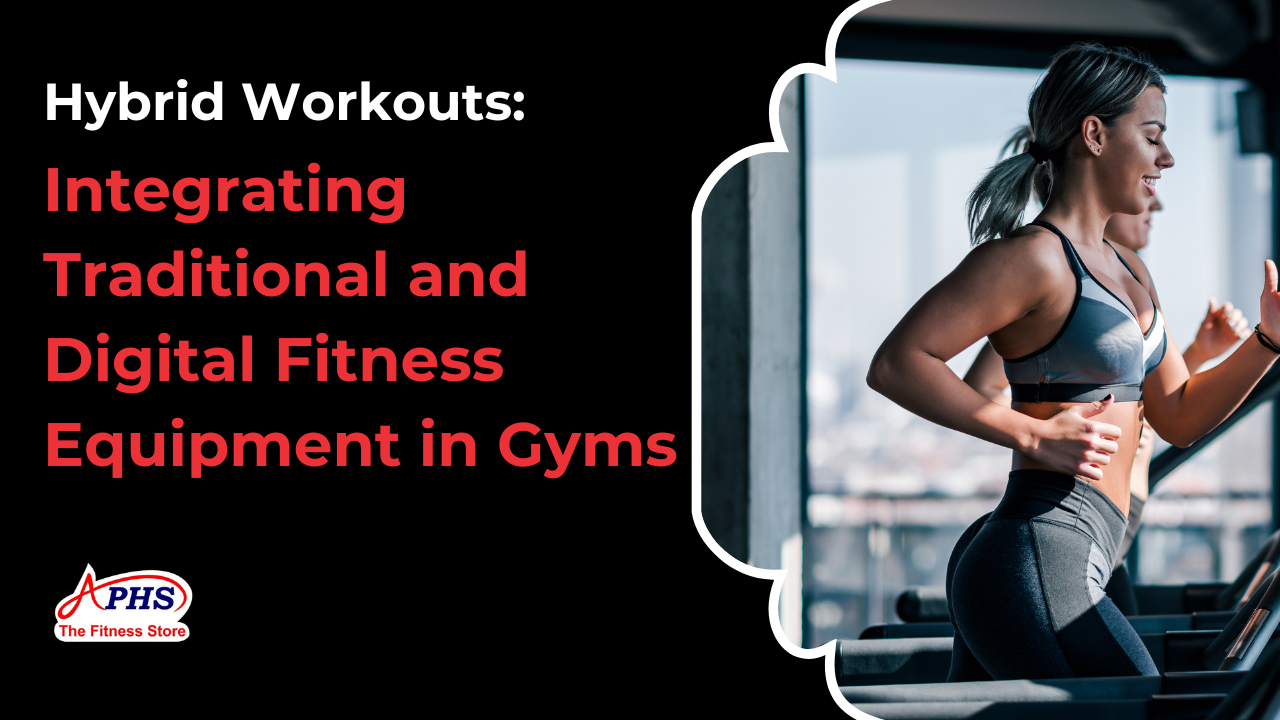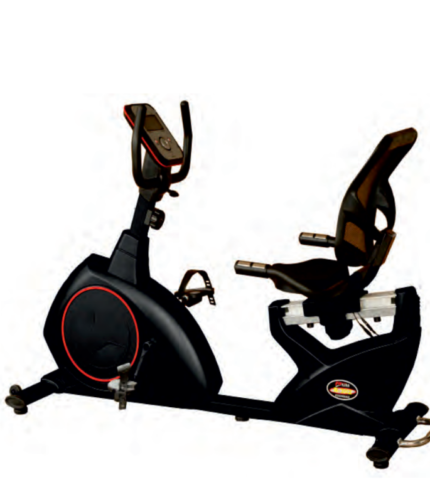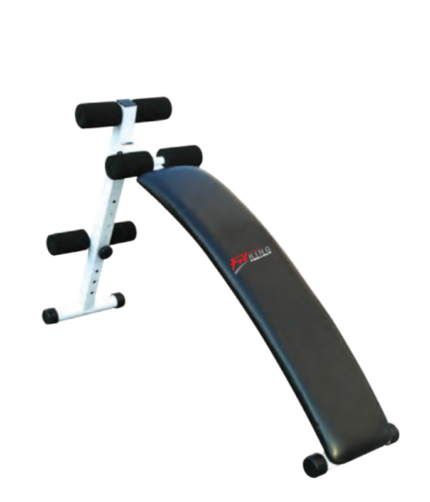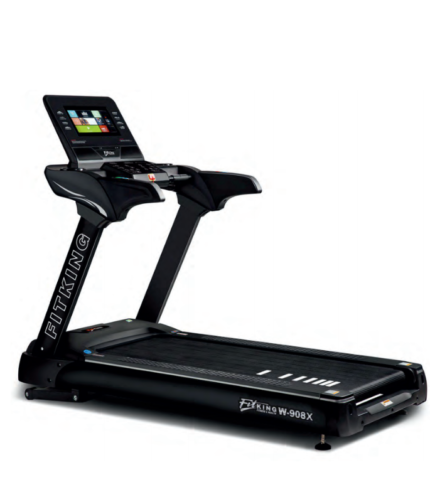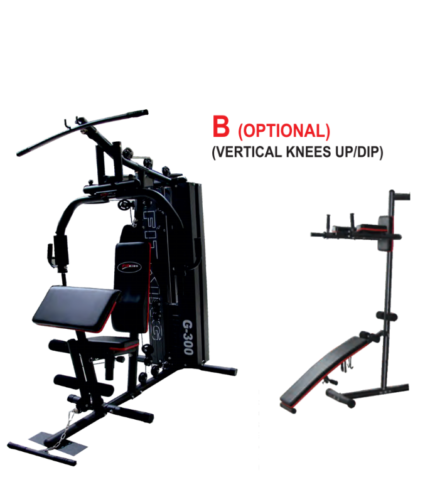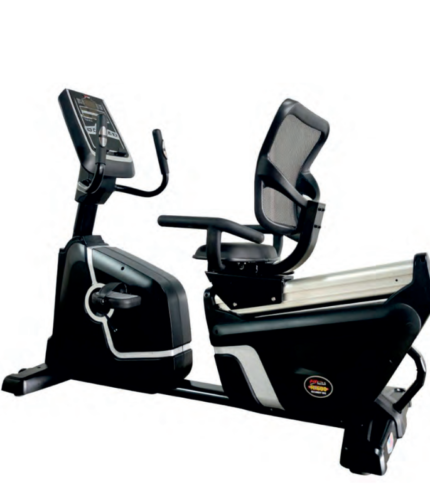In recent years, the fitness industry has undergone a significant transformation, driven by advancements in technology and changing consumer preferences. Traditional gym equipment, while still effective, is being complemented and enhanced by digital fitness solutions, leading to the rise of hybrid workouts. These workouts seamlessly integrate traditional and digital fitness equipment, providing a comprehensive and engaging fitness experience. In this blog, we will explore the concept of hybrid workouts, the benefits of integrating traditional and digital fitness equipment, and how gyms can effectively implement these solutions to meet the evolving needs of their members.
The Evolution of Fitness Workouts
The fitness industry has always been dynamic, constantly evolving to incorporate new trends and technologies. Traditional fitness workouts, which typically involve the use of free weights, resistance machines, and cardiovascular equipment, have been the backbone of gyms for decades. These methods are tried and tested, offering tangible results in strength, endurance, and overall fitness.
However, the digital revolution has introduced a new dimension to fitness. With the advent of wearable technology, fitness apps, virtual classes, and smart equipment, digital fitness has become an integral part of modern workouts. These advancements have made fitness more accessible, personalized, and engaging, catering to a diverse range of fitness levels and preferences.
What Are Hybrid Workouts?
Hybrid workouts combine the best of both traditional and digital fitness methods to create a holistic fitness experience. They leverage the strengths of traditional equipment, such as free weights and resistance machines, with the benefits of digital tools, including wearables, fitness apps, and smart gym equipment. This integration enhances the workout experience by providing real-time feedback, personalized training programs, and engaging content.
Benefits of Hybrid Workouts
Integrating traditional and digital fitness equipment offers several advantages for both gym members and operators:
1. Enhanced Engagement and Motivation
Digital fitness tools provide interactive and engaging content that can keep members motivated. Features such as gamification, virtual challenges, and real-time feedback make workouts more enjoyable and encourage members to stay committed to their fitness goals.
2. Personalized Training
Hybrid workouts allow for highly personalized training experiences. Fitness apps and smart equipment can track individual performance, provide customized workout plans, and adjust exercises based on progress and goals. This personalization can lead to more effective and efficient workouts.
3. Comprehensive Fitness Tracking
Wearable devices and fitness apps enable comprehensive tracking of various fitness metrics, including heart rate, calories burned, steps taken, and sleep quality. This data can be used to monitor progress, set realistic goals, and make informed decisions about training and recovery.
4. Accessibility and Convenience
Digital fitness solutions make it easier for members to access workouts anytime, anywhere. Virtual classes, on-demand training sessions, and mobile apps provide the flexibility to work out at home, in the gym, or on the go, accommodating different schedules and preferences.
5. Community Building
Hybrid workouts can foster a sense of community among gym members. Online challenges, virtual classes, and social features on fitness apps enable members to connect, share their progress, and support each other, creating a supportive and motivating environment.
Key Components of Hybrid Workouts
To successfully integrate traditional and digital fitness equipment, gyms need to incorporate several key components:
1. Smart Gym Equipment
Smart gym equipment is at the heart of hybrid workouts. These machines are equipped with sensors and connectivity features that allow them to sync with fitness apps and wearables. Examples include:
- Smart Treadmills and Bikes: These cardio machines come with touchscreens, internet connectivity, and built-in workout programs. They can track metrics such as speed, distance, and heart rate, providing real-time feedback and personalized training.
- Connected Strength Training Machines: These machines use digital interfaces to guide users through exercises, track repetitions and sets, and adjust resistance based on performance. Examples include smart dumbbells, kettlebells, and cable machines.
- Interactive Fitness Mirrors: These devices act as personal trainers, providing on-demand workout classes and real-time feedback on form and technique.
2. Wearable Technology
Wearable devices, such as fitness trackers and smartwatches, play a crucial role in hybrid workouts. They track various fitness metrics, provide real-time feedback, and sync with fitness apps to offer personalized insights and recommendations. Popular wearables include:
- Apple Watch: Known for its comprehensive health and fitness tracking features, including heart rate monitoring, GPS, and workout tracking.
- Fitbit: Offers a range of fitness trackers with features such as step counting, sleep tracking, and heart rate monitoring.
- Garmin: Provides advanced fitness tracking for activities like running, cycling, and swimming, along with GPS and heart rate monitoring.
3. Fitness Apps and Platforms
Fitness apps and platforms are essential for delivering digital content and tracking progress. They offer a wide range of features, including workout plans, virtual classes, progress tracking, and social interactions. Some popular fitness apps include:
- Peloton: Known for its live and on-demand workout classes, including cycling, running, strength training, and yoga.
- Nike Training Club: Offers a variety of workouts, personalized training plans, and expert tips.
- MyFitnessPal: A comprehensive fitness and nutrition app that tracks exercise, diet, and overall health.
4. Virtual and On-Demand Classes
Virtual and on-demand classes provide members with the flexibility to work out at their convenience. These classes can be streamed on smart gym equipment, fitness apps, or interactive fitness mirrors. They cover a wide range of activities, including cardio, strength training, yoga, and HIIT.
5. Comprehensive Member Management Systems
To effectively manage hybrid workouts, gyms need robust member management systems. These systems should integrate with fitness apps and wearable devices, allowing members to book classes, track progress, and receive personalized recommendations. Features to look for include:
- Class Scheduling and Booking: Allows members to easily schedule and book classes through a mobile app or website.
- Progress Tracking: Provides detailed insights into members’ fitness progress, including workout history, performance metrics, and goals.
- Personalization: Offers personalized workout recommendations based on members’ preferences, goals, and performance data.
Implementing Hybrid Workouts in Gyms
To successfully implement hybrid workouts, gyms need to consider several factors, including infrastructure, technology, and member engagement. Here are some steps to guide the process:
1. Assess the Needs of Your Members
Understanding the needs and preferences of your members is crucial for designing effective hybrid workouts. Conduct surveys, focus groups, and analyze usage data to gain insights into what your members are looking for in a fitness experience. Consider factors such as preferred workout types, technology usage, and fitness goals.
2. Invest in Smart Gym Equipment
Investing in smart gym equipment is essential for creating a hybrid workout environment. Look for machines that offer connectivity features, real-time feedback, and integration with popular fitness apps and wearables. Consider the following types of equipment:
- Cardio Machines: Treadmills, stationary bikes, and ellipticals with touchscreens and internet connectivity.
- Strength Training Machines: Smart dumbbells, kettlebells, and resistance machines with digital interfaces.
- Interactive Fitness Mirrors: Devices that provide on-demand workout classes and real-time feedback.
3. Integrate Wearable Technology
Encourage members to use wearable devices by offering incentives, such as discounts on memberships or exclusive access to certain features. Ensure that your gym’s equipment and management systems are compatible with popular wearables, allowing for seamless data integration and personalized insights.
4. Partner with Fitness Apps and Platforms
Collaborate with fitness apps and platforms to provide members with access to high-quality digital content. This can include workout plans, virtual classes, and progress tracking. Ensure that these platforms integrate with your gym’s equipment and member management systems.
5. Offer Virtual and On-Demand Classes
Provide members with the flexibility to work out at their convenience by offering virtual and on-demand classes. Invest in high-quality video production to create engaging and effective workout content. Consider offering a variety of class types, including cardio, strength training, yoga, and HIIT.
6. Implement a Comprehensive Member Management System
A robust member management system is essential for effectively managing hybrid workouts. Look for a system that integrates with fitness apps and wearables, allowing members to book classes, track progress, and receive personalized recommendations. Key features to consider include:
- Class Scheduling and Booking: Easy-to-use interface for scheduling and booking classes.
- Progress Tracking: Detailed insights into members’ fitness progress.
- Personalization: Personalized workout recommendations based on members’ preferences, goals, and performance data.
7. Engage and Educate Members
Engage and educate your members about the benefits of hybrid workouts and how to use the new equipment and technology. Offer workshops, tutorials, and one-on-one sessions to help members get the most out of their fitness experience. Provide regular updates and communication to keep members informed and motivated.
8. Monitor and Evaluate
Regularly monitor and evaluate the effectiveness of your hybrid workout offerings. Collect feedback from members, analyze usage data, and make adjustments as needed to ensure that your gym continues to meet the evolving needs of its members.
Case Studies: Successful Integration of Hybrid Workouts
Several gyms and fitness centers have successfully integrated hybrid workouts, offering valuable insights and inspiration for others looking to do the same. Here are a few case studies:
1. Equinox
Equinox, a luxury fitness brand, has embraced hybrid workouts by incorporating digital fitness solutions alongside traditional gym equipment. They offer a range of smart gym equipment, including connected cardio machines and strength training equipment. Equinox members also have access to the Equinox+ app, which provides on-demand classes, personalized workout plans, and progress tracking. This integration has allowed Equinox to offer a comprehensive and engaging fitness experience, both in their gyms and at home.
2. Peloton
Peloton is known for its innovative approach to fitness, combining high-quality gym equipment with digital content. Their smart bikes and treadmills come with touchscreens that stream live and on-demand classes. Peloton’s app offers a wide range of workouts, including cycling, running, strength training, and yoga, which can be accessed anytime, anywhere. This hybrid approach has made Peloton a popular choice for fitness enthusiasts looking for a flexible and engaging workout experience.
3. Orangetheory Fitness
Orangetheory Fitness has successfully integrated traditional and digital fitness methods to create a unique workout experience. Their classes combine cardio, strength training, and rowing, using traditional gym equipment such as treadmills and free weights. Orangetheory also incorporates wearable technology to monitor heart rate and provide real-time feedback. Members can track their progress through the Orangetheory app, which offers personalized insights and workout recommendations. This hybrid approach has helped Orangetheory build a loyal and motivated community of members.
Conclusion
Hybrid workouts represent the future of fitness, combining the best of traditional and digital methods to create a comprehensive and engaging fitness experience. By integrating smart gym equipment, wearable technology, fitness apps, and virtual classes, gyms can offer personalized, flexible, and motivating workouts that cater to the evolving needs of their members.
To successfully implement hybrid workouts, gyms need to invest in the right technology, understand the needs of their members, and provide comprehensive support and education. By doing so, they can create a dynamic and effective fitness environment that keeps members engaged, motivated, and on track to achieve their fitness goals.
As the fitness industry continues to evolve, embracing hybrid workouts will be essential for gyms looking to stay competitive and meet the demands of modern fitness enthusiasts. The future of fitness is hybrid, and the time to integrate traditional and digital fitness equipment is now.


